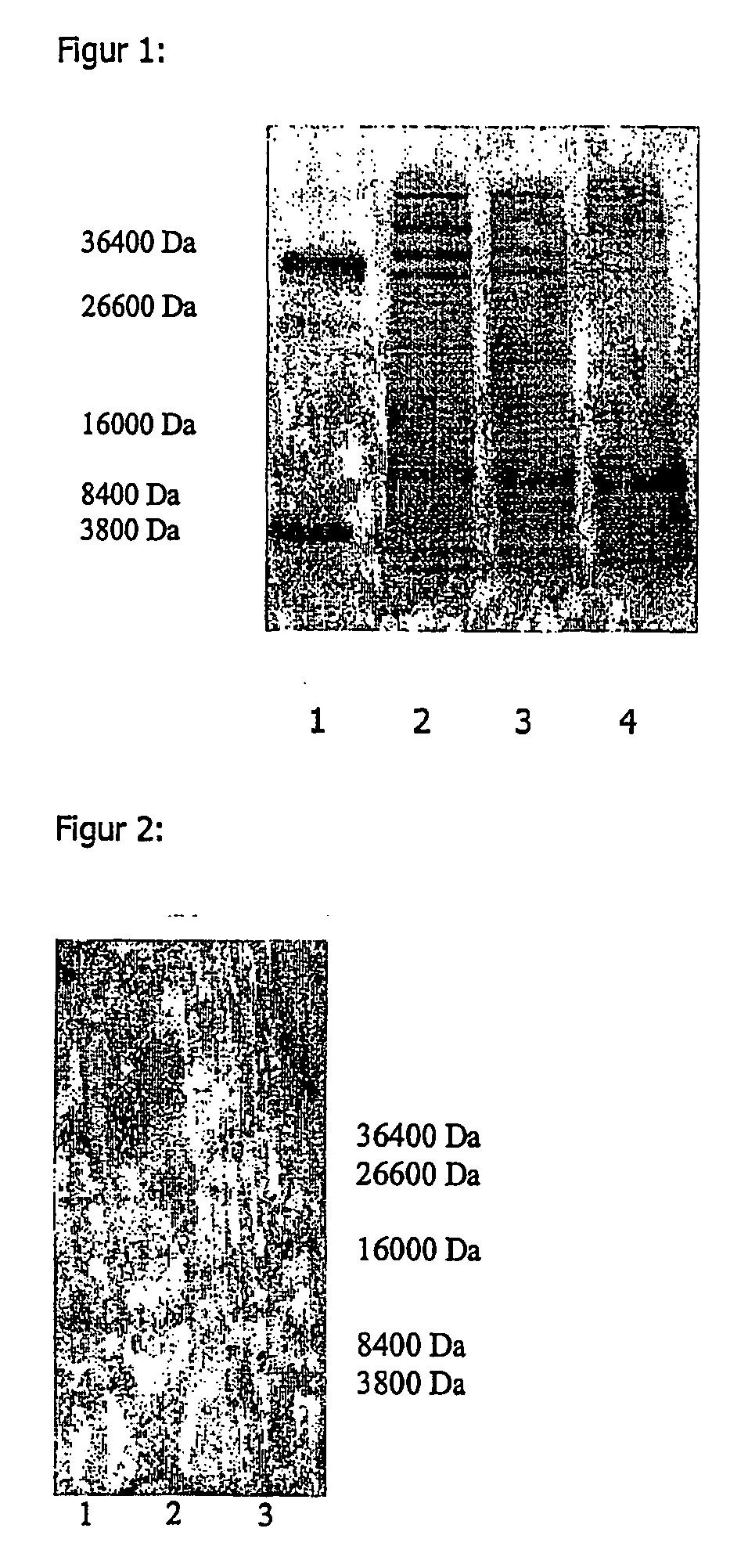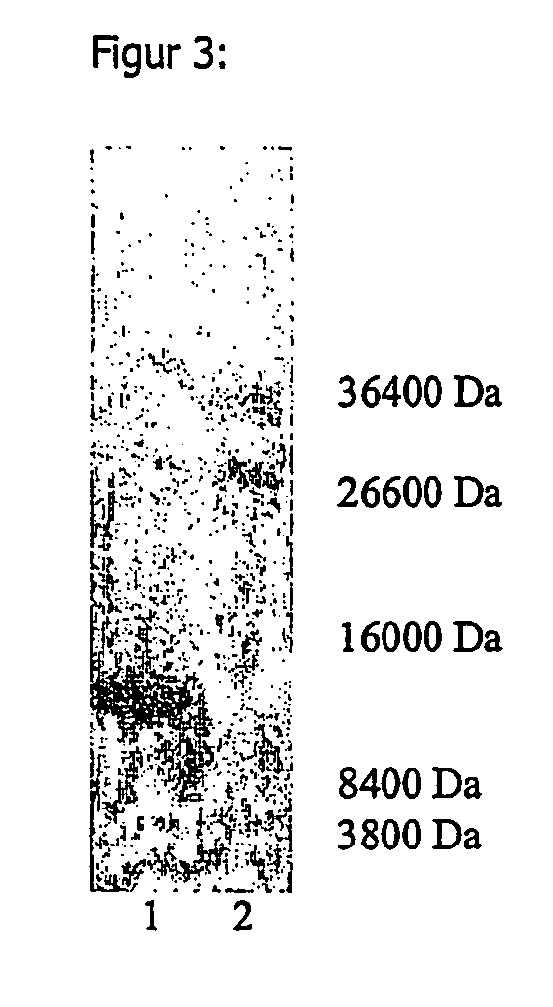Cosmetic and/or pharmaceutical preparations
a technology of cosmetics and pharmaceuticals, applied in the field of cosmetics and/or pharmaceutical preparations, can solve the problems of insufficient elucidation of the molecular fundamentals of tolerance to drought and the formation of free radicals capable of damaging proteins, fats and nucleic acids,
- Summary
- Abstract
- Description
- Claims
- Application Information
AI Technical Summary
Benefits of technology
Problems solved by technology
Method used
Image
Examples
example 1
[0156] 50 g freeze-dried Saccharomyces cerevisiae were suspended in 370 ml ammonium acetate buffer at 4.degree. C. The buffer consisted of 50 mM ammonium acetate and 50 mM NaCl and had a pH of 7.5. The cells were destroyed with a sonificator at 4-10.degree. C. During this procedure, the pH was kept at 7.5 with 2 n NaOH solution. The cell debris was removed by centrifuging at 4.degree. C. and the supernatant solution was incubated for 10 mins. at 80.degree. C. The solution was centrifuged once more and the 212 g of liquid obtained were spray-dried. The yield of dry matter was 4.7%, based on the quantity of yeast cells used. An SDS-PAGE analysis was carried out to determine the molecular weights of the proteins obtained. The results can be found in Example 4 and FIGS. 1-3.
example 2
[0157] 4.5 liters of a medium containing 10 g / l of a bacteriological peptone, 20 g / l glucose, 5 g / l yeast extract and 0.8 M mannitol in osmotic water were autoclaved for 30 mins. at 121.degree. C. 67 g freeze-dried Saccharomyces cerevisiae cells were added and cultivated under these osmotic stress conditions for 24 hours with shaking at 30.degree. C. in the presence of air. The cells were harvested and centrifuged for 20 mins. at 4.degree. C. / 5,600 G. The cells were then washed in ammonium acetate buffer (pH 7.5). 203 g biomass were obtained and 92 g of the biomass were suspended in 327 ml ammonium acetate buffer. The cells were destroyed with a sonificator at 4-10.degree. C. During this procedure, the pH was kept at 7.5 with 2 n NaOH solution. The cell debris was removed by centrifuging at 4.degree. C. and the supernatant solution was incubated for 10 mins. at 80.degree. C. The solution was centrifuged once more and the 303 g of liquid obtained were spray-dried. The yield of dry ma...
example 3
[0158] 1 kg fresh baker's yeast Saccharomyces cerevisiae was suspended in 2 liters water with 50 mM NaCl. The pH of the solution was adjusted to 7.5 with 2 n NaOH, after which the solution was heated for 15 mins. at 100.degree. C. and then cooled. The cells were destroyed at 800 bar in a discontinuous high-pressure homogenizer. The concentration of the proteins obtained was 27 g / l. The pH was adjusted to 4 with 2 n sulfuric acid, after which the suspension was reheated for 15 mins. to 100.degree. C. and then cooled. Insoluble fractions were removed by centrifuging for 30 mins. at 5600 G and the supernatant solution was filtered. The opalescent solution obtained was dried and 4.3% dry product were obtained. The opalescent solution obtained was dried and 4.3% dry product were obtained. The SDS-PAGE analysis of this extract can be found in Example 4 and FIGS. 1-3.
PUM
| Property | Measurement | Unit |
|---|---|---|
| temperatures | aaaaa | aaaaa |
| molecular weights | aaaaa | aaaaa |
| height | aaaaa | aaaaa |
Abstract
Description
Claims
Application Information
 Login to View More
Login to View More - R&D
- Intellectual Property
- Life Sciences
- Materials
- Tech Scout
- Unparalleled Data Quality
- Higher Quality Content
- 60% Fewer Hallucinations
Browse by: Latest US Patents, China's latest patents, Technical Efficacy Thesaurus, Application Domain, Technology Topic, Popular Technical Reports.
© 2025 PatSnap. All rights reserved.Legal|Privacy policy|Modern Slavery Act Transparency Statement|Sitemap|About US| Contact US: help@patsnap.com


